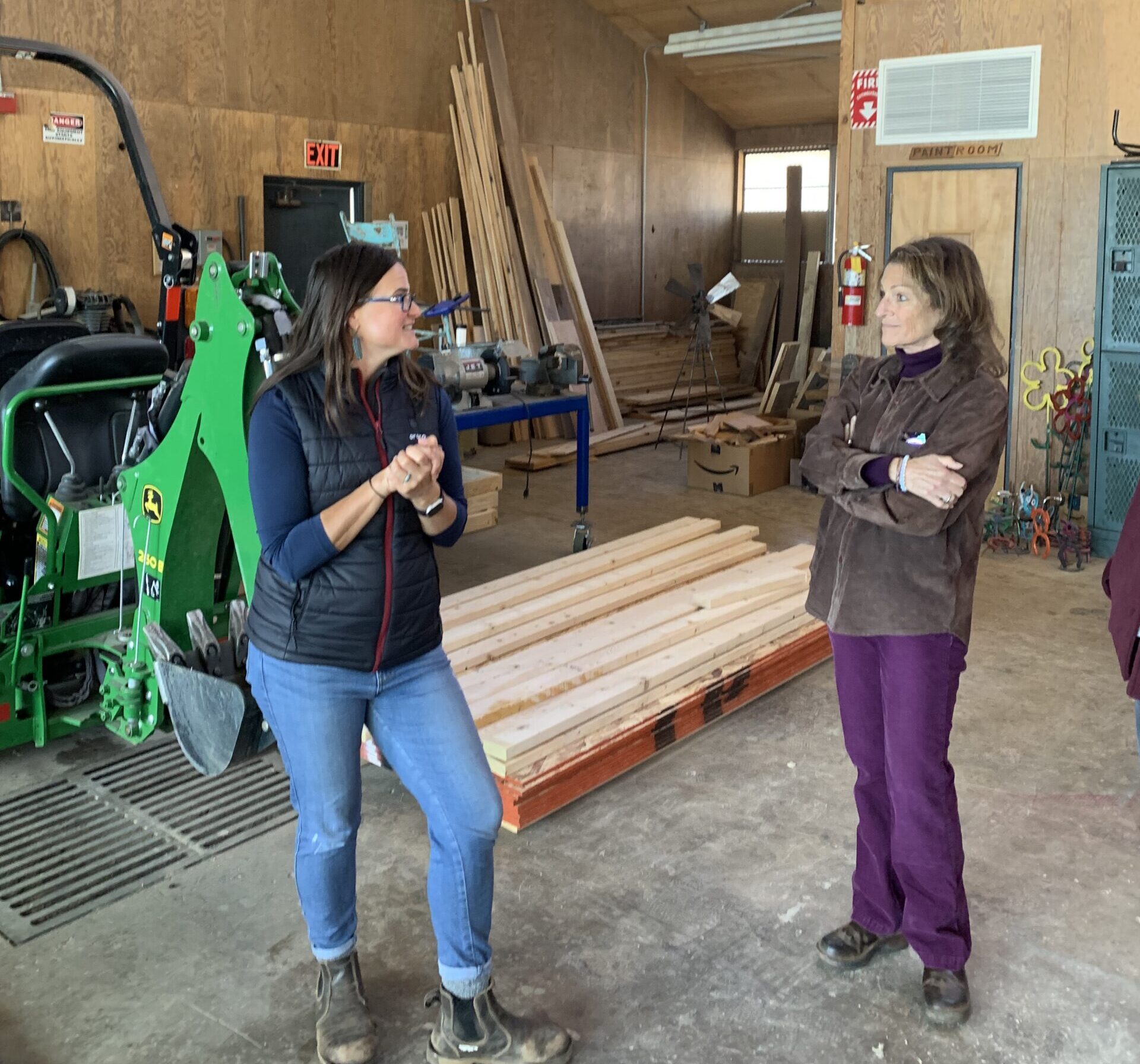The 2020 US Census revealed a handful of counties across the nation had a 10% or more decline in population. Plumas County, unfortunately, was one of them. As rural areas across the nation grapple with the challenges of declining populations, the need for vocational education has never been more pressing. Regions such as ours, rich in natural resources and cultural heritage, face a critical juncture where the future of their economies and communities hangs in the balance. By investing in vocational education, we can not only revitalize our area but also equip residents with the skills necessary to thrive in a rapidly changing job market.
Leaving Home for Good
Many rural communities are experiencing significant outmigration among younger populations. Factors such as limited job opportunities, lack of access to higher education, and the allure of urban life contribute to this trend. As a result, areas such as ours are left with an aging population and a shrinking workforce, which can lead to economic decline.
Without a robust workforce, local businesses struggle to find skilled employees, which hampers growth and can lead to closures. The absence of diverse job opportunities further exacerbates the situation, leading to a lack of investment and innovation.
The Good News there is an Answer with Vocational Education
A March 3, 2025 Wall Street Journal article indicated school districts around the United States are spending tens of millions of dollars to expand and revamp high-school shop classes for the 21st century. They are betting on the future of manual skills overlooked in the digital age, offering vocational-education classes that school officials say give students a broader view of career prospects with or without college. With higher-education costs soaring and white-collar workers under threat by generative AI, the timing for these programs couldn’t be better and more essential.
Rallying to Take-On the Issue in Plumas County
The Jerry & Yvonne Kehr Education Fund was established with The Almanor Foundation (TAF) in 2023 to address the urgent and complex challenges that threaten the educational and economic future of Plumas County. These challenges include: an aging and shrinking population, dwindling school budgets due to population decline, a shortage of skilled workers, and a talent drain when youth go off to college or seek outside opportunities and do not return.
Hospitality is a key industry driving Plumas County’s tourism industry. The need for chefs, line chefs, and knowledgeable staff is growing.
Business Need in Plumas County
In the spring of 2024, TAF collected information from 20 employers across Plumas County. Though the sample size was small, the results were informative. Employers came from various industries: timber, ranching, health (15%); the trades (5%); hospitality (30%); retail (20%); education (5%); government agencies (10%); and nonprofits.
Forty percent of respondents felt that educational and vocational opportunities in the county were only somewhat aligned with their current or future employment needs and an additional 50% felt there was no alignment at all. Ninety-five percent indicated interest in participating in initiatives to improve cooperation and communication between their business or industry and educational institutions. And a full 90% responded “agree” to “strongly agree” that practical hands-on training for employees was important to their industry.
The top educational/vocational programs these businesses felt they would most benefit from fell into five categories, listed here by priority:
- Mechanical and technical skills and certifications
- Organizational or management skills
- Business knowledge
- Data management or accounting
- Marketing or PR skills, oral and written communication, social media
Interestingly, when asked,” What are the current gaps or areas of improvement needed in the knowledge or skill sets of your current job applicants?”, respondents rated the most needed areas of improvement as:
- Work ethic/desire to learn/initiative
- Time management skills
- Problem solving skills
- Oral communication skills
According to California Labor Data, the occupations in Plumas County with the fastest job growth estimated 2020 through 2030 are: cooks, physical therapist assistants, bartenders, medical and health services managers, and public relations managers.
Addressing the Need
Vocational education that focuses on equipping our residents with specific skills for the industries or businesses in our county, or on careers and entrepreneurial opportunities that will open up with innovative technologies, can offer a solution to many of our county’s challenges. Such programs can:
Address the Skill Gaps. Plumas County industries, forestry, forest products, agriculture, healthcare, and hospitality and tourism require skilled workers. Vocational programs can help meet these needs by providing tailored training that aligns with our local job market.
Promote Economic Diversification. By offering a variety of vocational courses, our county has the potential to diversify the economy. For instance, today’s tech tools like video conferencing, project management software and collaboration platforms, enable remote work that allow those of us who love living a rural lifestyle to access jobs that were previously unavailable. In addition, vocational courses could open up opportunities in health technologies, renewable energy technologies, e-commerce and online marketplaces. Opening these job markets to Plumas County residents could make our communities more resilient to economic shifts.
Encourage Youth to Stay or “Come Back”. Young people are more likely to stay in their hometowns if they see viable career paths. By investing in vocational education, communities/we can provide opportunities for our youth to gain skills and find employment locally that yields a satisfying life in a place they grew up loving.
Foster Entrepreneurship. Vocational education can also encourage entrepreneurial ventures. Programs that teach practical skills and business acumen empower individuals who want to start their own businesses.
First Steps. Where Are We Now?
TAF’s Education Committee, comprised of stakeholders in business, the trades, k-12 and higher education, public and private, and workforce development organizations, aims first to identify all vocational education programs now available to our residents. Secondly, it can assist in outreach or marketing of these available programs to our residents and then address gaps, and secure funding for those working on the front lines of development. Tasks include:
Collaborating with Local Industries: Partnerships between educational institutions, local businesses, and work force organizations have begun to map programs currently offered, assess if what is offered aligns with actual workforce needs, and identify gaps. Collaborations such as this can also lead to apprenticeship opportunities that provide hands-on experience.
Understanding Available Technology. Online learning platforms can help overcome geographical barriers. Assessment and promotion of remote vocational training opportunities makes quality education available without the need to travel long distances.
Seeking Funding and Support: Government grants, private investments, and community fundraising can help establish and sustain vocational programs.
Engaging the Community: Involving community members in the planning and implementation of vocational programs enhances their relevance and effectiveness. Feedback from local residents can help tailor courses to meet specific needs.
Conclusion
The need for vocational education opportunities in rural areas with declining populations such as Plumas County is imperative for the revitalization of our communities. By equipping our residents with the skills necessary to thrive in today’s economy, we can create a sustainable future that fosters growth and innovation. Investing in vocational education benefits individuals as well as strengthens entire communities, ensuring that they remain vibrant and viable for generations to come.
Jerry and Yvonne Kehr were educators and mentors, giving quietly of their time and money to advance the needs of youth in Plumas County. To invest in the youth of Plumas County and continue the Kehr’s legacy, please donate now.



